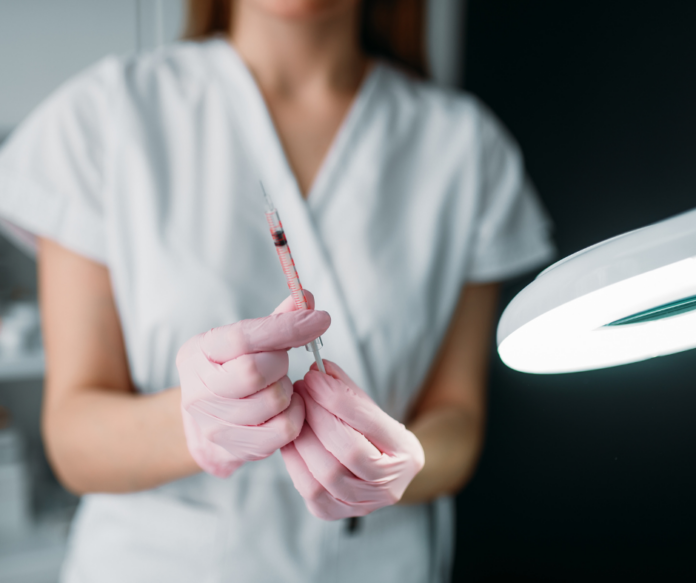
Botox Injection Techniques for Medical Professionals
Botox injections have become increasingly popular in recent years. With many people seeking medspa services to help reduce the appearance of fine lines and wrinkles. As a medical professional, it’s essential to stay up-to-date on the latest techniques and best practices for administering Botox injections. In this article, we will address common questions and concerns about Botox injection techniques. Providing specific answers and solutions to help you better serve your patients.
What is Botox and How Does it Work?
Botox is a brand name for botulinum toxin type A, a neurotoxin derived from the bacterium Clostridium botulinum. When injected into the muscles, Botox works by blocking the release of acetylcholine. A neurotransmitter responsible for muscle contractions. This temporary paralysis of the muscles leads to a reduction in the appearance of wrinkles and fine lines, giving the skin a smoother, more youthful appearance. The effects of Botox typically last for three to six months. After which the muscles gradually regain their function, and the wrinkles may reappear.
For more information on Botox and its mechanism of action, refer to this resource from the American Society of Plastic Surgeons.
What are the Key Botox Injection Techniques?
Patient Assessment and Consultation
Before administering Botox injections, it’s crucial to conduct a thorough patient assessment and consultation. This process involves discussing the patient’s medical history, their expectations, and any potential contraindications. It’s also essential to evaluate the patient’s facial anatomy and muscle function to determine the most appropriate injection sites and dosages.
Injection Site Preparation
Proper preparation of the injection site is critical for minimizing the risk of infection and ensuring optimal results. This includes cleansing the area with an antiseptic solution, such as isopropyl alcohol, and marking the injection sites with a surgical pen. It’s also important to ensure that the patient’s skin is free of makeup, lotions, or other substances that could interfere with the injection.
Injection Technique
There are several key factors to consider when administering Botox injections, including needle selection, injection depth, and injection angle. Using a fine-gauge needle (typically 30 or 32 gauge) can help minimize patient discomfort and reduce the risk of bruising. The injection depth should be tailored to the specific muscle being targeted, with superficial muscles requiring more shallow injections and deeper muscles requiring deeper injections. The injection angle should be perpendicular to the skin surface to ensure accurate placement of the Botox.
Post-Injection Care
After administering the Botox injections, it’s essential to provide the patient with appropriate post-injection care instructions. This may include avoiding strenuous exercise, heat exposure, and massaging the treated area for 24 hours following the procedure. Patients should also be advised to contact their healthcare provider if they experience any unusual side effects or complications.
For a comprehensive guide on Botox injection techniques, refer to this resource from the International Association for Physicians in Aesthetic Medicine.
What are the Potential Risks and Complications of Botox Injections?
While Botox injections are generally considered safe when administered by a qualified medical professional, there are potential risks and complications that patients should be aware of. These may include:
– Pain, swelling, or bruising at the injection site
– Headache or flu-like symptoms
– Drooping eyelids or eyebrows (ptosis)
– Asymmetry or uneven results
– Difficulty swallowing, speaking, or breathing (in rare cases)
To minimize the risk of complications, it’s essential to follow proper injection techniques and adhere to the recommended dosages and injection sites. For more information on the potential risks and complications of Botox injections, refer to this resource from the U.S. Food and Drug Administration.
How Can Medical Professionals Stay Up-to-Date on Botox Injection Techniques?
Continuing education is crucial for medical professionals who administer Botox injections, as new techniques and best practices are continually emerging. Some ways to stay up-to-date on the latest Botox injection techniques include:
– Attending workshops, seminars, or conferences focused on aesthetic medicine
– Participating in online courses or webinars
– Subscribing to industry publications or journals
– Networking with other medical professionals in the field of aesthetic medicine
For a list of reputable organizations offering Botox training and continuing education opportunities, refer to this resource from the American Academy of Facial Esthetics.
Summary: Botox injection techniques for medical professionals
Botox injections are a popular medspa service that can help patients achieve a more youthful appearance by reducing the appearance of fine lines and wrinkles. As a medical professional, it’s essential to stay up-to-date on the latest Botox injection techniques and best practices to ensure optimal results and minimize the risk of complications. By conducting thorough patient assessments, following proper injection techniques, and staying informed about the latest advancements in the field, you can provide your patients with safe and effective Botox treatments.



